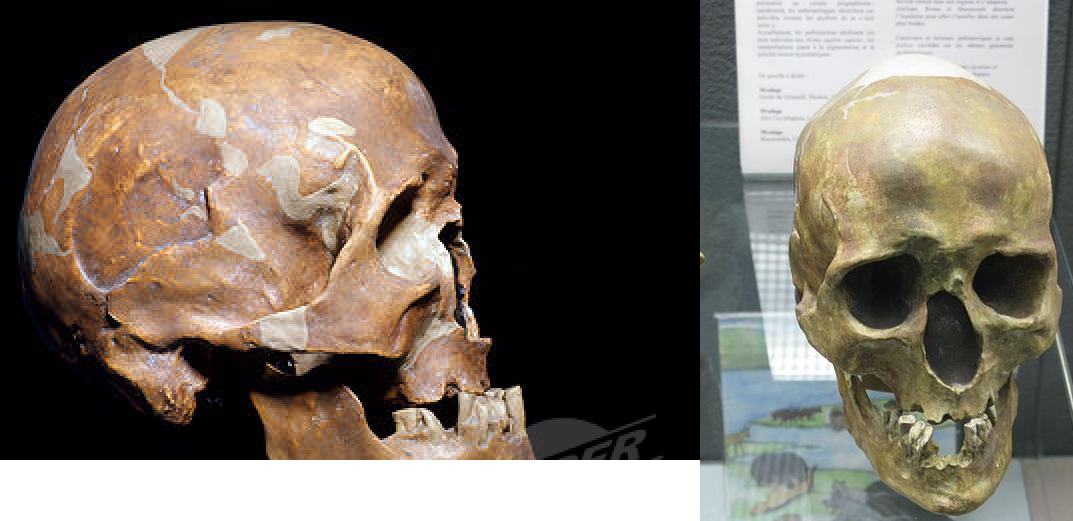Lebrok, have you some photo's of the Magdalenian 'Chancelade ' skulls, from different angles, and have you other 'Chancelade' men or women at hand?
thanks beforehand for good sharing
looking at this specimen, I find it present something which could be seen as a step towards a proto-mediterranian type: still some archaic features but far mor numerous "modern" traits -
roughly same ratio mandibule breadth/cheekbones breadth as 'brünn' or 'combe-capelle' but more compressed, and typically modern 'mediterranian' the beginning of reducing of the inferior mandibule in all dimensions, and broadening of frontal-temporal frontier, frontal seemingly a bit bulbous on this picture - for the nose, too destroyed! -
so a trend towards 'mediterranians would be started in some ligneages of France at this time: upon what older form? not Cro-Magnon at first sight -
from what I red, without clear explanations, some Magdalenians were more ont the Cro-Magnon side: how much of this 'chancelade' form at these times? an early infiltration from South or an evolution on older more ruggish forms of 'combe-capelle'?














